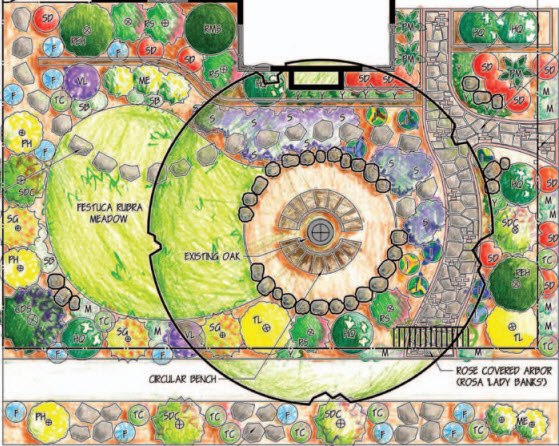Are you sick of dealing with flooding generated at home or transported from nearby areas when it rains? Urban areas are especially prone to the negative effects of runoff because of the large amounts of impervious surfaces in our world. Although storm drain systems are effective at moving water off the roads and into our creeks and the bay, none of the water is treated and pollutants such as pesticides, fertilizers and trash can be difficult and expensive to remove.
Here are a couple ways to help reduce runoff and prevent pollutants from impacting water quality by mimicking nature:
1. Soil: Knowing your soil type can help you find ways to improve water holding capacity and drainage. Most native soils in San Jose are clay or clay loam. Clay can hold onto water for a long time, but it can also prevent water from infiltrating. Clay soils can be amended with gypsum and compost (organic matter) to break down tough minerals and increase the pore spaces in the soil. Check out this factsheet for more information:
2. Hardscape: Do you have a concrete path or driveway? Do the downspouts from your home drain roof runoff directly onto them? If so, consider replacing these with a permeable option such as porous bricks, perk grout, decomposed granite, permeable asphalt, etc. Or perhaps slope and redirect runoff from hardscapes so that they drain towards vegetated areas such as swales or rain gardens. Both methods will reduce the total volume of water reaching nearby water bodies, settle out fine particles, and give microbes in the soil a chance to neutralize or capture/remove pollutants. Check out this factsheet for more information:
3. Rainwater Harvesting: If you have rain gutters and down spouts that collect roof runoff, your site is likely a good candidate for a rain barrel or cistern. Capturing rainwater is easy and often requires minimal time and investment. Rainwater can be utilized for non-potable uses such as irrigation. Temporarily storing small amounts of rainwater can help prevent erosion, improve water quality, and reduce demand for drinking water.










